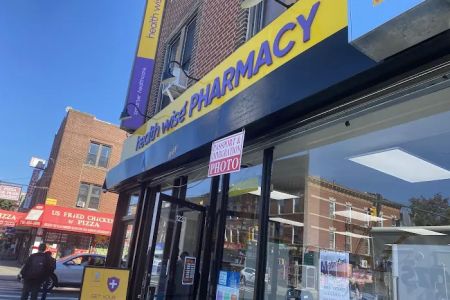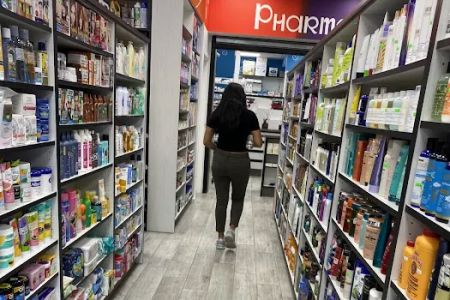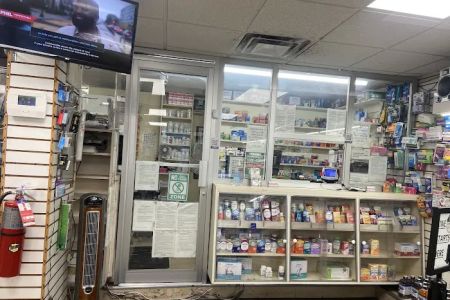Pharmacy Disaster Preparedness Plans: Ensuring Pharmacy Continuity During Emergencies
As a pharmacy professional, I’ve always known that managing patient health and safety is crucial—no matter what challenges we face. However, when I learned more about pharmacy disaster preparedness plans, I realized how vital it is for pharmacies to be ready for unexpected events, such as natural disasters, power outages, or public health emergencies. Over the years, I’ve come to understand that being unprepared can not only affect the business but also disrupt the care we provide to our patients.
In this article, I’ll take you through the essential steps I’ve learned to take in creating a robust pharmacy disaster preparedness plan. These plans are not just about protecting the physical space of a pharmacy, but they also ensure the continuity of service, the safety of staff and patients, and the resilience of the pharmacy’s operations in times of crisis. Whether you’re running a small independent pharmacy or a large pharmacy chain, disaster preparedness is crucial to navigating unforeseen disruptions effectively.
1. Understanding the Importance of Pharmacy Disaster Preparedness
In my experience, pharmacy disaster preparedness isn’t just a one-time checklist—it’s an ongoing process that requires constant evaluation and updates. A disaster can strike at any moment, and without a well-thought-out response plan, the impacts can be catastrophic, from delays in prescription services to potential harm to patients.
For example, I recall a time when a local pharmacy in our area faced a power outage that lasted for several hours. Without a backup power plan in place, the pharmacy was unable to access critical patient information, affecting their ability to fill prescriptions. This not only caused frustration among patients but also led to a temporary loss of income for the business. Experiences like this made me realize that disaster preparedness in the pharmacy industry is not optional—it’s essential to ensure patient care and business continuity.
Pharmacies are responsible for providing critical medications, and any disruption can have a ripple effect on the well-being of patients. A pharmacy disaster preparedness plan addresses these challenges by outlining clear, actionable steps to take before, during, and after a disaster, ensuring that pharmacy services remain available to those in need.
2. Key Components of a Pharmacy Disaster Preparedness Plan
Through my time managing a pharmacy and discussing best practices with colleagues in the industry, I’ve come to understand that a comprehensive disaster preparedness plan consists of several critical components. Let’s dive into each of them to understand why they’re important for pharmacy operations during an emergency.
2.1 Risk Assessment and Vulnerability Analysis
The first step in any disaster preparedness plan is identifying potential risks and vulnerabilities. In my case, this meant evaluating the physical location of the pharmacy, considering the likelihood of natural disasters such as hurricanes, earthquakes, or floods. It also involved reviewing the supply chain—such as the availability of medications and equipment in times of crisis—and assessing how various events could disrupt operations.
Performing a risk assessment helps identify the most likely disasters and the areas of the business that will be most affected. Once this assessment is completed, you can then prioritize the areas that need the most attention, such as backup power systems, emergency communication methods, and employee training.
2.2 Emergency Communication Plan
One of the most critical aspects of a disaster preparedness plan, in my experience, is having a clear and effective communication strategy. Whether it's alerting staff about an emergency or informing patients about temporary service disruptions, having a reliable system in place is key to managing expectations and minimizing confusion.
In my pharmacy, we implemented an emergency communication plan that includes multiple channels, such as email, text alerts, and phone trees. This allows us to reach employees quickly, providing them with updates on the status of the situation and any changes to pharmacy hours or services. Additionally, it ensures that patients are notified if there’s any disruption in prescription services or delays in medication availability.
2.3 Backup Power and Technology Solutions
For any pharmacy, having a backup power system is essential to ensure the continuity of operations during a power outage. After experiencing the challenges posed by a sudden power failure, I immediately understood how vital it is to have an uninterruptible power supply (UPS) or a backup generator in place. These systems ensure that critical pharmacy operations—such as dispensing medications, accessing patient records, and maintaining refrigeration for sensitive medications—are not disrupted during a power outage.
Another important aspect of technology is maintaining up-to-date backup copies of patient records and other essential documents. In the event of a cyberattack or system failure, having access to secure, offsite backups ensures that pharmacy operations can continue without compromising patient care. This is a practice that should be part of any disaster preparedness plan.
2.4 Employee Training and Roles During Emergencies
When I first started preparing my pharmacy for potential disasters, one of the first things I learned was the importance of employee training. It’s one thing to have a disaster plan in place, but it’s another to ensure that your team knows exactly what to do when the time comes. Regular training sessions, drills, and clear role assignments ensure that every team member understands their responsibility during an emergency.
For example, in our pharmacy, we conduct regular drills where staff practice handling various disaster scenarios—whether it’s a flood, a fire, or a chemical spill. Each staff member is assigned specific roles, such as ensuring patient records are secured, assisting patients in evacuation, or ensuring that essential medications are protected during a crisis. This training is crucial for reducing panic and maintaining a calm, organized environment during an emergency.
3. Strategies for Effective Disaster Recovery and Continuity
Once the immediate danger of a disaster has passed, it’s essential to have a recovery plan in place to return to normal operations as quickly as possible. I’ve learned that the faster a pharmacy can resume full operations, the less impact it will have on patients and the business. Recovery should include assessing any damages, ensuring the safety of staff and patients, and restoring access to essential medications.
In my case, we focused on restoring communication systems first, followed by setting up temporary operations if necessary. It’s also vital to work with local authorities and healthcare providers to ensure the continued availability of essential medications, especially during public health emergencies or widespread disasters. This coordination with other organizations can make a world of difference when it comes to getting back to business as usual.
4. Testing and Updating Your Pharmacy Disaster Plan
One of the most important lessons I’ve learned from disaster preparedness is that plans need to be regularly tested and updated. Over time, the risks that your pharmacy faces may change, and the technologies or protocols in your disaster plan may become outdated. This is why it’s crucial to perform regular testing of your plan and ensure that everything from backup power systems to communication methods is still effective.
We conduct quarterly reviews of our disaster plan and update it based on any changes in regulations, new technologies, or new risks that have been identified. These updates ensure that we remain prepared for any potential disruptions and that our pharmacy can continue providing services during a crisis.
5. Conclusion: Ensuring the Future of Pharmacy Operations
Pharmacy disaster preparedness plans are a critical aspect of maintaining continuity and providing high-quality patient care during emergencies. By taking the necessary steps to plan for disasters—such as conducting a risk assessment, ensuring backup power systems, training staff, and maintaining an effective communication plan—you can minimize the impact of disasters on your pharmacy operations. The goal is to ensure that your pharmacy remains functional and resilient in the face of challenges, ultimately protecting both your patients and your business.
For more information and to access helpful resources on pharmacy disaster preparedness, visit our site at Pharmacy for expert guidance and recommendations on building a disaster-ready pharmacy.














